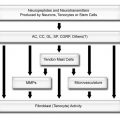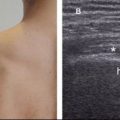1. Preoperative Surgical Perspective
Before the development of aseptic techniques by Joseph Lister in the mid-nineteenth century, orthopaedic surgery hardly seemed worthwhile. At least one-third of the patients died and most of the survivors suffered terrible complications from postoperative infections. Since then, operative techniques have dramatically evolved. The advances include, but are not limited to, less anesthetic, less cutting, less infection and shorter recovery time. Despite this tremendous progress, the decision on if, when and how to operate remains somewhat controversial and the specific approach best decided on a case-by-case analysis. Multiple factors such as duration of symptoms, size of the tear, and patient age require consideration.1 Traditional open repair was the first operative technique used for rotator cuff tears and may still be a good option if the tear is large or if additional reconstruction such as a tendon transfer has to be done.2 The arthroscopic repair is a more recently developed technique, which has the advantages of smaller surgical scar, fewer complications, lesser postoperative pain, and faster postoperative rehabilitation. Mini-open repair is a hybrid procedure, which combines open and arthroscopic repair, and considered an effective transitional stage in the long-term dissemination of purely arthroscopic repair.3
In general lines, asymptomatic tears are not considered for surgery because (1) there is no evidence that intervention prevents onset of symptoms and (2) the morbidity and mortality associated with the procedure are probably not warranted.4 In symptomatic tears, surgery is usually reserved for patients refractory to conservative treatment. The exceptions to this rule are acute traumatic symptomatic full-thickness tears, which are probably best repaired as soon as possible, ideally within 6 weeks after injury, to avoid tendon retraction and muscle atrophy.5 Symptomatic full-thickness cuff tears larger than 1.5 cm have a high rate of progression and should also be considered for early surgical repair in younger patients if there is limited fatty atrophy in order to avoid irreversible muscle changes. Smaller symptomatic full-thickness tears have a slower rate of progression, similar to partial-thickness tears, and can be considered for prolonged nonoperative treatment.6 Surgical management of symptomatic tears larger than 5.0 cm is technically difficult and associated with a high recurrence rate. It is critical, however, to recognize that these tears are not necessarily synonymous with irreparable tears.7 Although no agreement has been reached on the best surgical option for partial thickness tears, repair is usually performed for articular surface tears involving more than 50% of tendon thickness, whereas debridement is indicated if <50% is torn.8 Bursal surface partial-thickness tears are usually converted to full-thickness tears and repaired by using suture anchors.9
Stay updated, free articles. Join our Telegram channel

Full access? Get Clinical Tree





